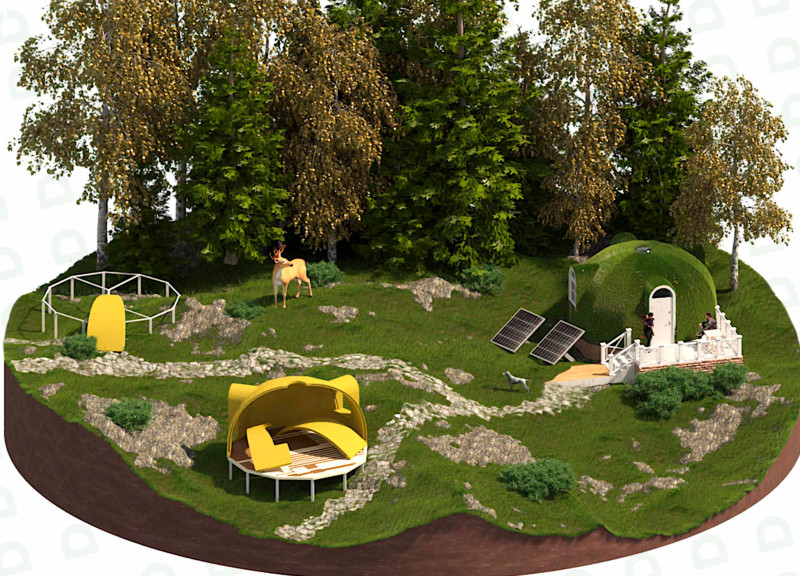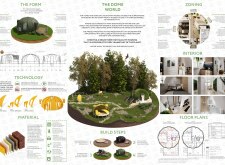5 key facts about this project
The design presents a dome structure that focuses on efficiency and adaptability within a modern residential setting. Located in a thoughtfully chosen environment, the project aims to offer a sustainable housing solution that meets contemporary living demands. The design embraces energy conservation and flexible space, using the unique features of the dome shape to enhance the experience of its occupants.
Energy Efficiency
The dome shape is effective at reducing heat loss, which lowers the costs of heating and cooling. This energy efficiency supports a sustainable way of living, making the residence an environmentally friendly option. The absence of standard load-bearing walls permits an open layout, allowing for various spatial arrangements that can be adapted to individual needs.
Natural Light and Acoustics
Inside the dome, natural light plays an essential role. The structure is designed to maximize daylight, creating a bright and inviting environment. In addition to light, the dome’s design offers improved sound insulation. Its resistance to vibrations helps to create quiet living spaces, contributing to a more relaxed atmosphere for residents.
Functional Layout
The layout is carefully organized to enhance usability. The kitchen and dining areas are integrated to promote both aesthetic appeal and practicality, encouraging social gatherings. Workspaces have been designed with modern ergonomic standards in mind, providing enough shelving and drawer space to support everyday tasks. Areas for relaxation are also thoughtfully designed, offering comfort and a pleasant retreat from daily activities.
Material Choices
Rigid closed-cell polyurethane foam is the main material used in the construction of the dome. This choice emphasizes durability and sustainability, with a life expectancy that exceeds 50 years. The foam is environmentally friendly and suitable for various applications, including use in child-care facilities. Additionally, its thermal insulating properties enhance the overall energy efficiency of the structure.
The design effectively balances function and comfort, resulting in a residence that is both practical and visually pleasing. Thoughtful attention to detail in each space creates an environment that meets the needs of its inhabitants while promoting a sense of well-being.


















































